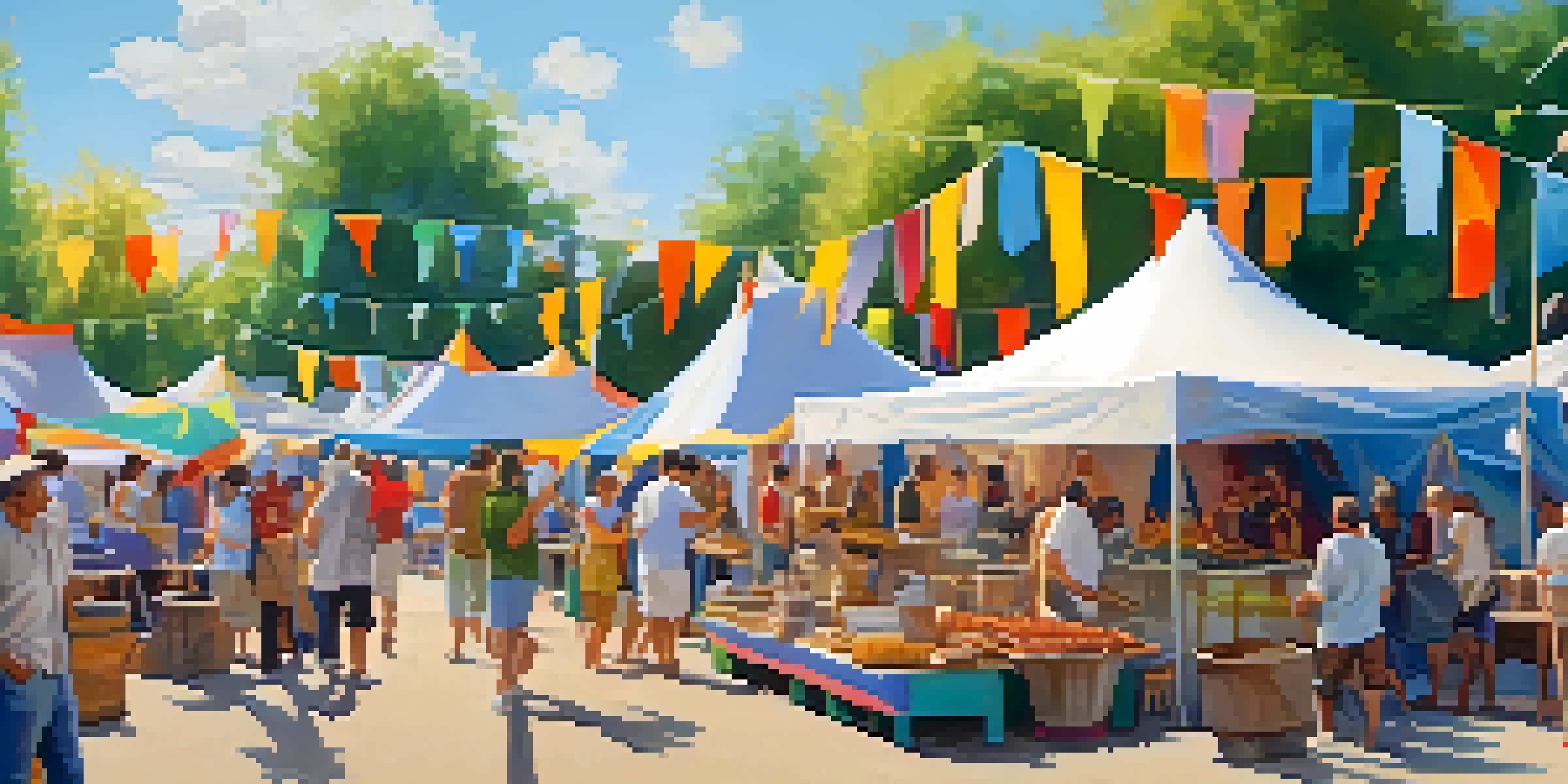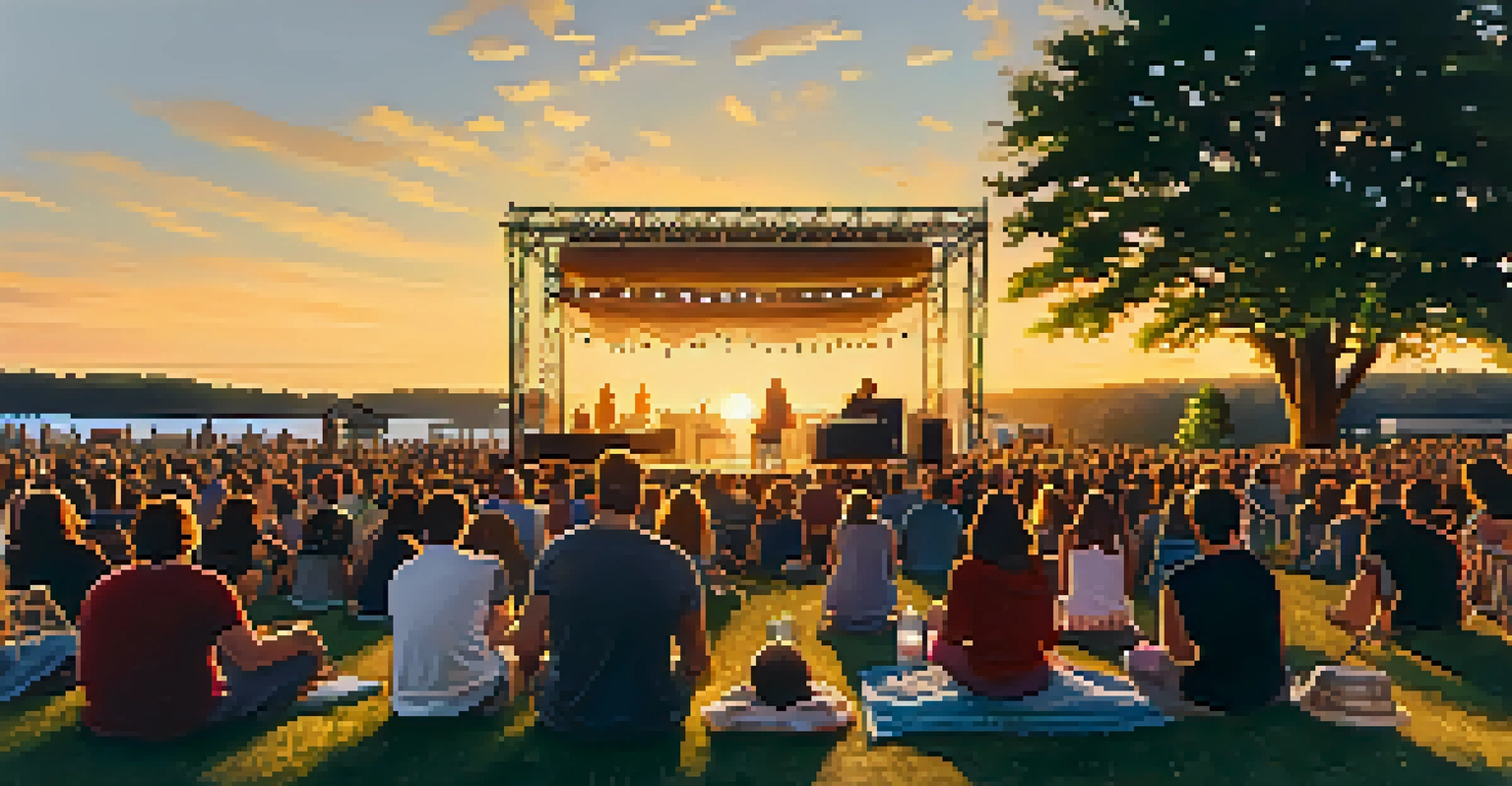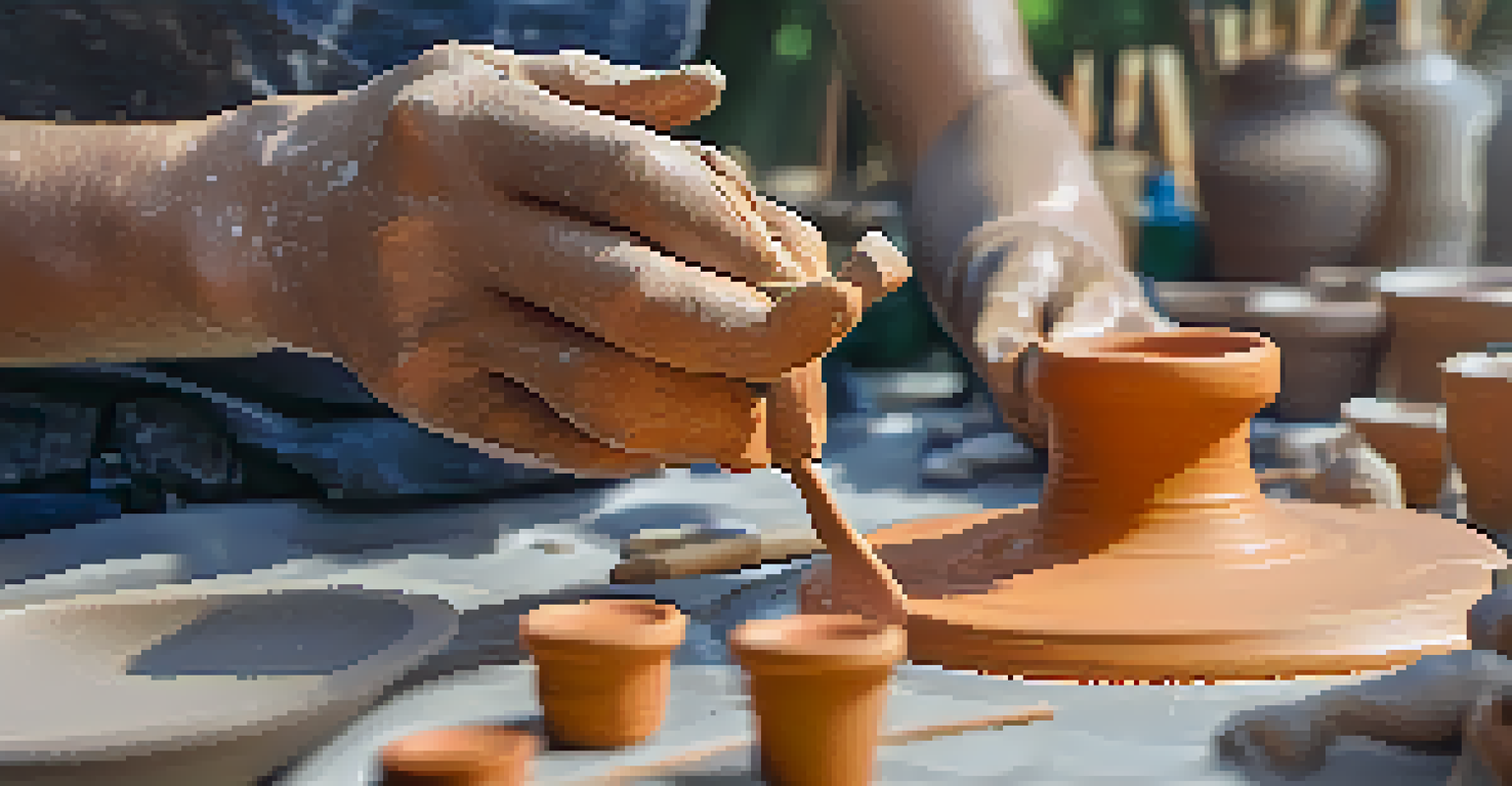Annual Arts Festivals Highlighting Local Talent and Diversity

The Importance of Arts Festivals in Communities
Arts festivals are vital to community identity, bringing together diverse groups to celebrate creativity. They act as a cultural hub, showcasing local talent and providing a platform for artists to shine. By fostering connections among residents, these events strengthen community ties and promote a sense of belonging.
Art enables us to find ourselves and lose ourselves at the same time.
For many artists, annual arts festivals are a chance to gain exposure and connect with potential patrons. Local musicians, painters, and performers often use these platforms to share their work with a broader audience. This exposure not only helps them grow as artists but also enriches the cultural fabric of the community.
Moreover, arts festivals can stimulate local economies by attracting visitors who spend on food, accommodations, and souvenirs. This influx of visitors can lead to increased business for local shops and restaurants, making arts festivals a boon for community development.
Showcasing Local Talent: A Stage for Emerging Artists
Annual arts festivals provide a unique opportunity for emerging artists to showcase their talents. Newcomers to the art scene often find it challenging to break into established circles, but festivals offer a welcoming platform. Here, they can share their work, meet fellow creatives, and build vital networks.

For instance, a young painter might display their artwork at a local festival, catching the eye of an art collector or gallery owner. This kind of exposure can lead to future opportunities and collaborations that might not have been possible otherwise. Such success stories highlight the potential of these festivals to launch careers.
Arts Festivals Strengthen Communities
These events foster connections among residents, promote local talent, and enhance community identity.
In addition to visual arts, festivals also feature performances from local musicians, dancers, and theater groups. This variety ensures that there’s something for everyone, allowing diverse talents to shine and engage audiences in meaningful ways.
Diversity in Arts: A Celebration of Cultural Heritage
Diversity is a cornerstone of annual arts festivals, reflecting the rich tapestry of cultures within a community. By showcasing a variety of artistic expressions, these events highlight the unique backgrounds and stories of local artists. This celebration of cultural heritage fosters appreciation and understanding among attendees.
The arts are not a luxury; they are a necessity. They are not an option; they are essential.
For example, a festival might feature traditional dances from various cultures, food stalls offering international cuisine, and exhibits showcasing indigenous art forms. This creates an immersive experience that educates attendees about different traditions and practices. Such exposure encourages dialogue and connection among diverse groups.
Furthermore, by prioritizing inclusivity, arts festivals help marginalized voices to be heard. This commitment to diversity not only enriches the festival experience but also empowers artists from underrepresented communities to share their narratives.
Community Engagement: Building Connections Through Art
Arts festivals are more than just showcases; they are community events that encourage engagement and interaction. Workshops, demonstrations, and interactive installations allow attendees to participate actively rather than just observe. This hands-on approach fosters a deeper appreciation for the arts.
Consider a pottery workshop where visitors can try their hand at crafting their own pieces. This not only provides a fun experience but also creates lasting memories and connections with local artists. Such interactions can inspire attendees to explore their creativity and even continue pursuing artistic endeavors after the festival.
Inclusivity and Diversity Celebrated
Arts festivals showcase a range of cultural expressions, empowering underrepresented artists and fostering appreciation among attendees.
Moreover, community engagement during festivals often leads to collaborative projects that extend beyond the event. These collaborations can result in new initiatives that promote further artistic endeavors, community cohesion, and ongoing cultural conversations.
Sustainability: Eco-Friendly Practices at Festivals
As awareness of environmental issues grows, many annual arts festivals are embracing sustainability. From using biodegradable materials to promoting local food vendors, these festivals are finding innovative ways to reduce their ecological footprint. This commitment to sustainability resonates with attendees who value eco-friendly practices.
For instance, some festivals incorporate recycling stations and encourage attendees to use public transport or carpool. By prioritizing eco-friendliness, these events not only set a positive example but also inspire attendees to adopt similar practices in their daily lives.
Additionally, featuring local artists who create works from recycled materials can highlight the importance of sustainability in art. This approach not only showcases creativity but also encourages conversations about environmental responsibility within communities.
The Role of Technology in Modern Arts Festivals
Technology has transformed the landscape of arts festivals, enhancing the experience for both artists and attendees. From virtual reality art installations to live streaming performances, technology offers innovative ways to engage audiences. This modernization allows festivals to reach a broader audience, including those unable to attend in person.
Social media has also played a crucial role in promoting festivals and artists. By sharing highlights, artist interviews, and behind-the-scenes content, festivals can create buzz and attract a larger audience. This digital presence helps build a community of supporters who are invested in local talent.
Technology Enhances Festival Experience
Innovative tech solutions engage audiences and expand access, making arts festivals more dynamic and inclusive.
Moreover, tech-savvy artists are using apps and platforms to create interactive experiences. This not only enriches the festival atmosphere but also allows for real-time feedback and engagement from attendees, making the festival feel more dynamic and connected.
The Future of Annual Arts Festivals: Trends to Watch
As we look ahead, annual arts festivals are likely to continue evolving to meet the changing needs of communities. Increased focus on inclusivity, sustainability, and technology will shape the future of these events. This adaptability ensures that festivals remain relevant and impactful in a rapidly changing world.
New trends may include hybrid festival formats that combine in-person and virtual elements, allowing for greater accessibility. This innovation can open doors for artists and attendees who may not have been able to participate otherwise. Embracing these changes can lead to a more diverse and vibrant festival experience.

Ultimately, the essence of annual arts festivals will remain the same: celebrating creativity and community. As these events continue to grow and adapt, they will undoubtedly play a crucial role in highlighting local talent and fostering cultural diversity.